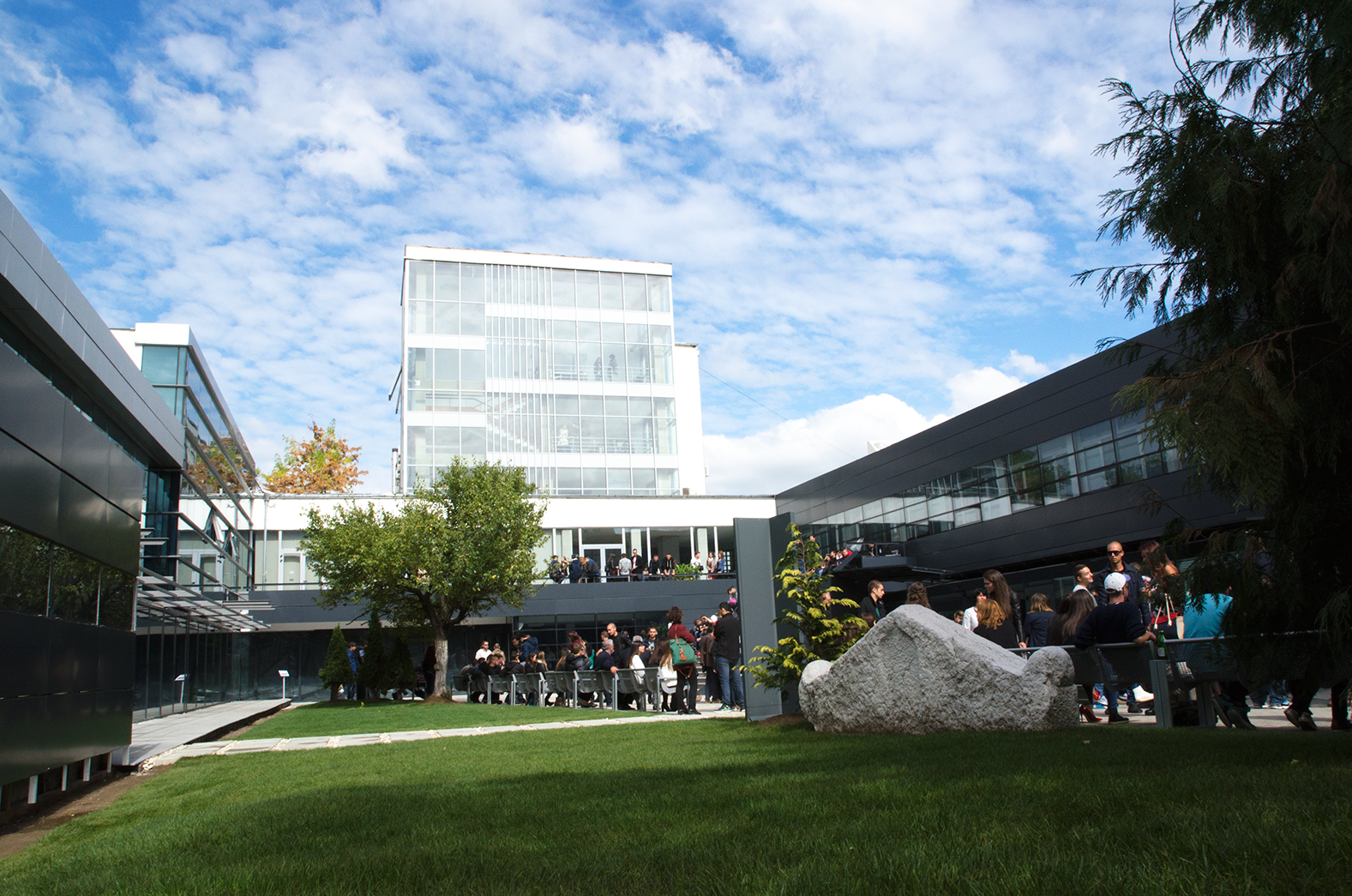|
Henrieta Todorova
Henrieta Todorova (Bulgarian: ''Хенриета Тодорова'') (25 February 1933 – 12 April 2015) was a Bulgarian archaeologist, specialist in prehistory, professor, corresponding member of the Bulgarian Academy of Sciences, corresponding member of the German Archaeological Institute in Berlin, a foreign member of the academy Leibniz Scientific Society (Leibniz-Sozietät der Wissenschaften) in Berlin. Biography Henrieta Todorova was born as Henrieta Theodor Blank on 25 February 1933 in Sofia. Her father, Hugo Carl Theodor Blank, was German. Her mother, Maria Statkova, was Bulgarian. She had a younger sister, Elsa. After WWII, she changed her German surname Theodor to Todorova. In the 1950s, she married Augustin Vais from Slovakia, with whom she had a son, Iven (Ivan). He is also an archaeologist. The marriage was dissolved. She then married Yordan Simeonov, with whom she had a daughter, Iveta. This marriage was also dissolved. Henrieta Todorova began her higher educa ... [...More Info...] [...Related Items...] OR: [Wikipedia] [Google] [Baidu] |
Sofia
Sofia ( ; bg, София, Sofiya, ) is the capital and largest city of Bulgaria. It is situated in the Sofia Valley at the foot of the Vitosha mountain in the western parts of the country. The city is built west of the Iskar river, and has many mineral springs, such as the Sofia Central Mineral Baths. It has a humid continental climate. Being in the centre of the Balkans, it is midway between the Black Sea and the Adriatic Sea, and closest to the Aegean Sea. Known as Serdica in Antiquity and Sredets in the Middle Ages, Sofia has been an area of human habitation since at least 7000 BC. The recorded history of the city begins with the attestation of the conquest of Serdica by the Roman Republic in 29 BC from the Celtic tribe Serdi. During the decline of the Roman Empire, the city was raided by Huns, Visigoths, Avars and Slavs. In 809, Serdica was incorporated into the Bulgarian Empire by Khan Krum and became known as Sredets. In 1018, the Byzantines ended Bulgarian rule ... [...More Info...] [...Related Items...] OR: [Wikipedia] [Google] [Baidu] |
Durankulak (archaeological Site)
Durankulak is a prehistoric archaeological site on the Golemija ostrov (Big Island) in Durankulak lake, Bulgaria. Prehistoric settlement commenced on the small island approximately 7000 BP and lasted for thousands of years. The first inhabitants were the Hamangia culture, dated from the middle of the 6th millennium to the middle of 5th millennium BC, and were the first manifestation of the Neolithic life in Dobrudja. Hamangia people were small-scale cultivators and plant collectors who built houses, made pottery, herded and hunted animals. Around 4700/4600 BC the stone architecture was already in general use and became a characteristic phenomenon that was unique in Europe. The settlement in Durankulak was a well-organized aggregation of buildings of substantial size with several rooms. They were coherently laid out according to a plan that was repeated over successive generations of house reconstructions. Buildings were rectilinear and large, narrow paths separated individual hous ... [...More Info...] [...Related Items...] OR: [Wikipedia] [Google] [Baidu] |
Bulgarian Women Archaeologists
Bulgarian may refer to: * Something of, from, or related to the country of Bulgaria * Bulgarians, a South Slavic ethnic group * Bulgarian language, a Slavic language * Bulgarian alphabet * A citizen of Bulgaria, see Demographics of Bulgaria * Bulgarian culture * Bulgarian cuisine, a representative of the cuisine of Southeastern Europe See also * * List of Bulgarians, include * Bulgarian name, names of Bulgarians * Bulgarian umbrella, an umbrella with a hidden pneumatic mechanism * Bulgar (other) * Bulgarian-Serbian War (other) The term Bulgarian-Serbian War or Serbian-Bulgarian War may refer to: * Bulgarian-Serbian War (839-842) * Bulgarian-Serbian War (853) * Bulgarian-Serbian wars (917-924) * Bulgarian-Serbian War (1330) * Bulgarian-Serbian War (1885) * Bulgarian-Serbi ... {{disambiguation Language and nationality disambiguation pages ... [...More Info...] [...Related Items...] OR: [Wikipedia] [Google] [Baidu] |
2015 Deaths
This is a list of deaths of notable people, organised by year. New deaths articles are added to their respective month (e.g., Deaths in ) and then linked here. 2022 2021 2020 2019 2018 2017 2016 2015 2014 2013 2012 2011 2010 2009 2008 2007 2006 2005 2004 2003 2002 2001 2000 1999 1998 1997 1996 1995 1994 1993 1992 1991 1990 1989 1988 1987 See also * Lists of deaths by day The following pages, corresponding to the Gregorian calendar, list the historical events, births, deaths, and holidays and observances of the specified day of the year: Footnotes See also * Leap year * List of calendars * List of non-standard ... * Deaths by year {{DEFAULTSORT:deaths by year ... [...More Info...] [...Related Items...] OR: [Wikipedia] [Google] [Baidu] |
1933 Births
Events January * January 11 – Sir Charles Kingsford Smith makes the first commercial flight between Australia and New Zealand. * January 17 – The United States Congress votes in favour of Philippines independence, against the wishes of U.S. President Herbert Hoover. * January 28 – "Pakistan Declaration": Choudhry Rahmat Ali publishes (in Cambridge, UK) a pamphlet entitled ''Now or Never; Are We to Live or Perish Forever?'', in which he calls for the creation of a Muslim state in northwest India that he calls " Pakstan"; this influences the Pakistan Movement. * January 30 ** National Socialist German Workers Party leader Adolf Hitler is appointed Chancellor of Germany by President of Germany Paul von Hindenburg. ** Édouard Daladier forms a government in France in succession to Joseph Paul-Boncour. He is succeeded on October 26 by Albert Sarraut and on November 26 by Camille Chautemps. February * February 1 – Adolf Hitler gives his "Proclamation to ... [...More Info...] [...Related Items...] OR: [Wikipedia] [Google] [Baidu] |
Veliko Tarnovo University
The St. Cyril and St. Methodius University of Veliko Tarnovo (Bulgarian ''Великотърновски университет „Св. св. Кирил и Методий“'') is a Bulgarian university based in Veliko Tarnovo. History The university was established on 15 September 1963. It inherited the cultural and education traditions of Turnovo Literary School. In the first academic year, 25 professors, assistants and teachers came from universities in Sofia and the Bulgarian Academy of Science. The first subjects were Bulgarian Philology, Russian Philology, History and Art. The university was founded by Aleksandar Burmov and Penio Rusev. In 1971 the school was accredited as Veliko Tarnovo University "St. Cyril and St. Methodius". Structure The university is divided into 9 faculties: * Faculty of Economics * Faculty of Education * Faculty of Fine Arts * Faculty of History * Faculty of Law * Faculty of Modern Languages * Faculty of Orthodox Theology * Faculty of Phi ... [...More Info...] [...Related Items...] OR: [Wikipedia] [Google] [Baidu] |
New Bulgarian University
New Bulgarian University ( bg, Нов български университет, also known and abbreviated as НБУ, NBU) is a private university based in Sofia, the capital of Bulgaria. Its campus is in the western district of the city, known for its proximity to the Vitosha nature park. The university also owns multiple other buildings across the country, as well as its own publishing house and a library. Among the list of NBU Honorary Doctors and Honorary Professors are Richard Rorty, Thomas Sebeok, Wolfgang Iser, Terry Eagleton, Julia Kristeva, Jean-Pierre Vernant, Ralf Dahrendorf, Steve Forbes, Geert Hofstede, Ennio Morricone, Milcho Leviev, Raina Kabaivanska, Alexander Fol, Vera Mutafchieva, Georgy Fotev etc. The mission of New Bulgarian University is to: - be an autonomous academic institution that supports students in their entrepreneurial and personal development. - be a liberal academic institution, based on the link between education, research and entrepreneurshi ... [...More Info...] [...Related Items...] OR: [Wikipedia] [Google] [Baidu] |
Sofia University
Sofia University "St. Kliment Ohridski" ( bg, Софийски университет „Св. Климент Охридски“) is a public research university in Sofia, Bulgaria. It is the oldest institution of higher education in Bulgaria. Founded on 1 October 1888, the edifice of the university was constructed between 1924 and 1934 with the financial support of the brothers Evlogi Georgiev and Hristo Georgiev (whose sculptures are now featured on its façade) and has an area of 18,624 m2 and a total of 324 premises. The university has 16 faculties and three departments, where over 21,000 students receive their education. The current rector is Anastas Gerdzhikov. It has been consistently ranked as the top university in Bulgaria according to national and international rankings, being constantly among the best four percent of world universities according to ''QS World University Rankings''. History The university was founded on 1 October 1888—ten years after the li ... [...More Info...] [...Related Items...] OR: [Wikipedia] [Google] [Baidu] |
Durankulak
Durankulak ( bg, Дуранкулак ) is a village in northeastern Bulgaria, part of Shabla Municipality, Dobrich Province. Located in the historical region of Southern Dobruja, Durankulak is the north-easternmost inhabited place in Bulgaria and the northernmost village of the Bulgarian Black Sea Coast, although the village itself is slightly inland. Durankulak lies north of the town of Shabla, with the only places to the north along the coast being the formerly exclusively Czechoslovak camping site Kosmos and the Kartalburun and Sivriburun headlands. Durankulak is also the name of the nearby border checkpoint on the Bulgarian-Romanian border; just north of the border is the Romanian seaside resort Vama Veche. The village lies on an elevation of 26 metres above mean sea level, on the E87 littoral road, 6 kilometres south of the Romanian border. Durankulak lies 100 km from Varna, 68 km from Dobrich and 60 km from Constanţa. The coastal Lake Durankulak is loc ... [...More Info...] [...Related Items...] OR: [Wikipedia] [Google] [Baidu] |
Gumelnița–Karanovo Culture
The Gumelniţa–Karanovo VI culture was a Neolithic culture of the 5th millennium BC, named after the Gumelniţa site on the left (Romanian) bank of the Danube. Geography At its full extent the culture extended along the Black Sea coast to central Bulgaria and into Thrace. The aggregate "Kodjadermen-Gumelnita-Karanovo VI" evolved out of the earlier Boian, Marita and Karanovo V cultures. In the East it was supplanted by Cernavodă I in the early 4th millennium BC. Periodization One of the most flourishing civilizations from the last half of the 5th millenium BC is (next to the Ariuşd Cucuteni – Tripolie complex) Gumelniţa Culture... absolute chronology, still under discussion, according to the latest calibrated data, assigns this culture (as mentioned above) to the limits of the last half of the 5th millenium BC and maybe to early 4th millenium BC. :—Silvia Marinescu-Bîlcu, "Gumelniţa Culture" This matches exactly the view of Blagoje Govedarica (2004). The first ... [...More Info...] [...Related Items...] OR: [Wikipedia] [Google] [Baidu] |
Kingdom Of Bulgaria
The Tsardom of Bulgaria ( bg, Царство България, translit=Tsarstvo Balgariya), also referred to as the Third Bulgarian Tsardom ( bg, Трето Българско Царство, translit=Treto Balgarsko Tsarstvo, links=no), sometimes translated in English as Kingdom of Bulgaria ( bg, Крáлство България, Kralstvo Balgariya, links=no), was a constitutional monarchy in Southeastern Europe, which was established on 5 October ( O.S. 22 September) 1908, when the Bulgarian state was raised from a principality to a Tsardom. Ferdinand, founder of the royal family, was crowned a Tsar at the Declaration of Independence, mainly because of his military plans and for seeking options for unification of all lands in the Balkans region with an ethnic Bulgarian majority (lands that had been seized from Bulgaria and given to the Ottoman Empire in the Treaty of Berlin). The state was almost constantly at war throughout its existence, lending to its nickname as "the ... [...More Info...] [...Related Items...] OR: [Wikipedia] [Google] [Baidu] |






